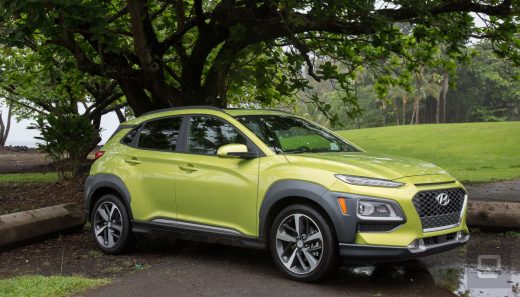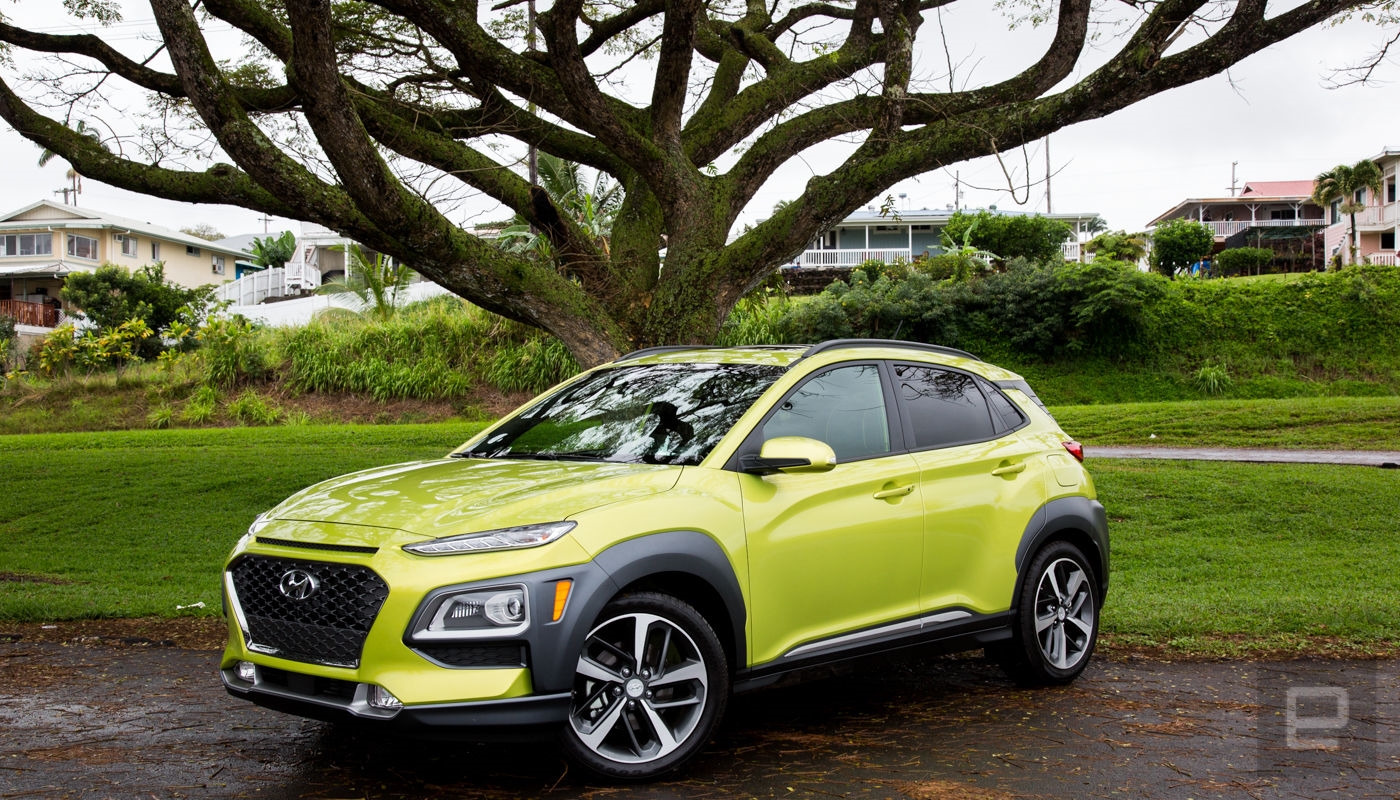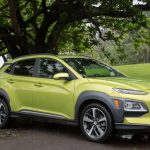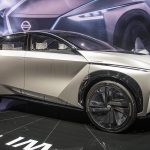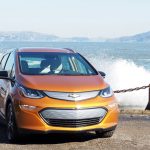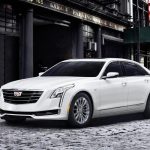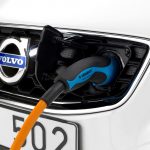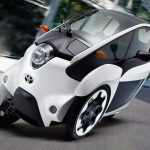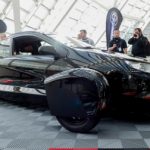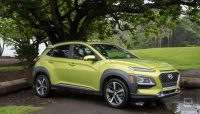Hyundai’s Kona is ready for almost anything
Imagine you’re going out for the night with friends. You have the perfect jeans. You just picked up a great shirt or blouse. You’re having a great hair day, your sock game is on point. Hell, you even picked up a new smartphone earlier in the day. You look great and step out on the town. Except you’re missing a shoe.
That’s the new Hyundai Kona crossover (starting at $19,500). The great-looking person who’s ready to take on the world and is so much fun to be around you don’t even notice the missing shoe until way into the night. Sure, it’s confusing at first, but you get over it. You’re a having a good time, why spoil it? I really enjoyed driving the Kona even though its “missing shoe” continues to be a head-scratcher. (Don’t worry, we’ll get to what the “shoe” is soon enough).
First off, Hyundai hit a sweet spot with the design. The look should appeal to the younger crowd while not turning off older buyers. It has aggressive lines but not so much that it looks like it’ll slice your hand if you get too close. From all angles, it’s a looker.
The interior, though, isn’t as stunning. But comfortable seats and a logical control layout — that’s carried over from other Hyundais (and Kias) — should keep most people happy. Everything is where you expect, and I didn’t have to hunt to find any features. And, of course, you can add a little flair if you’re into that (for a price).
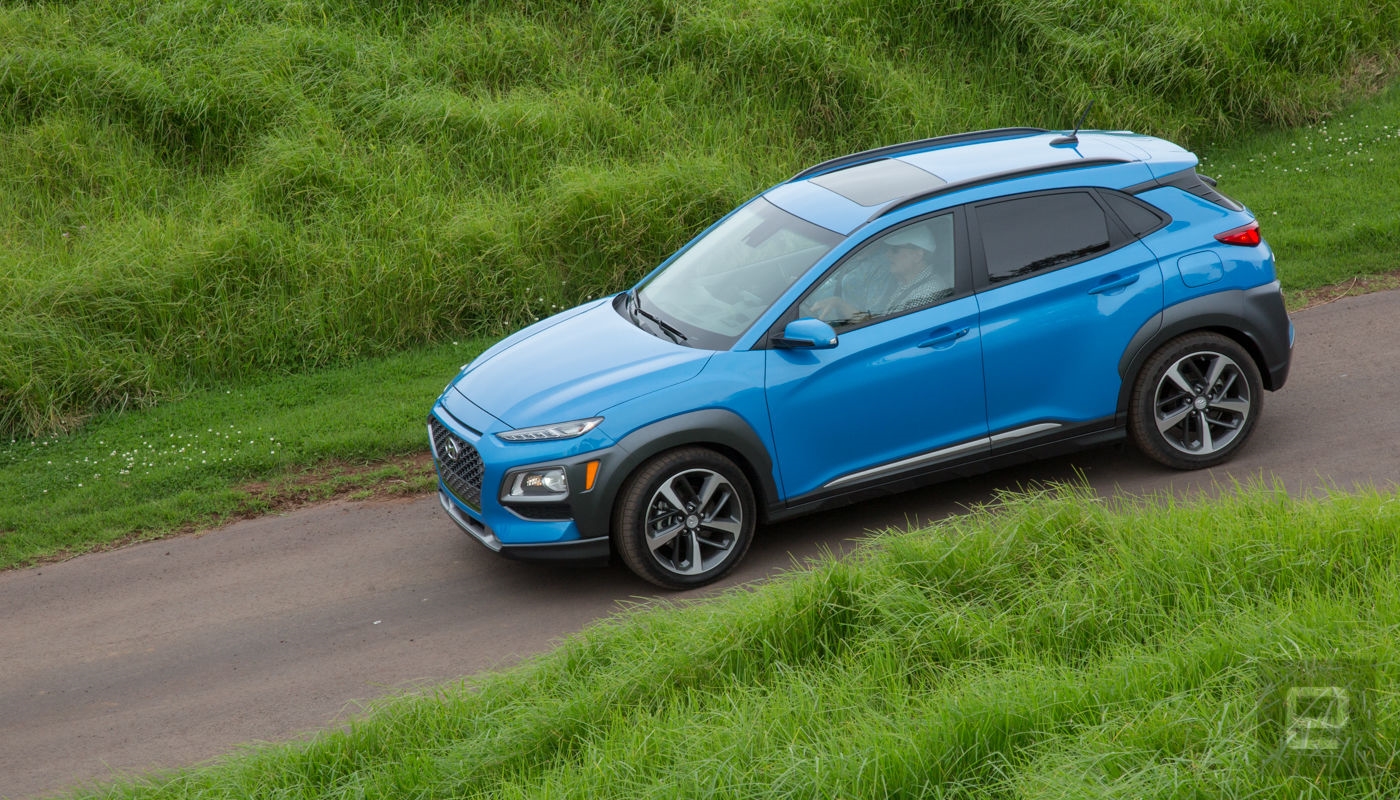
There’s an option to add green highlights to the trim and stitching of the interior. It’s a nice touch, but seems like it’s not going to win over many older buyers. I think it gave the car a nice pop, but you know, lime green isn’t everyone’s cup of tea. What nearly everyone will like is the pop-up heads-up display (HUD) option available on the top trim level. For folks interested more in hauling gear or tons of groceries instead of looking cool, there’s 45.8 cubic feet of storage space with the rear seats folded down and storage space under the cargo floor for various knick-knacks.
Behind the wheel, the 1.6-liter turbo engine (175 horsepower and 195 pounds of torque) found in the Limited and Ultimate trim levels was punchy enough to give me the confidence needed during stoplight takeoffs that I wouldn’t be left behind by other drivers. It was also able to overtake slower drivers going uphill and the 7-speed dual clutch transmission performed well during spirited drives and while cruising.
The base level and second level trim options offer a 2.0-liter engine with 147 horsepower and 132 pounds of torque. If you’re not looking for speed and power, it should be adequate for your needs. All trim levels offer a $1,300 upgrade to all-wheel drive (AWD), which seems like a no-brainer especially if you live in an area with inclement weather.
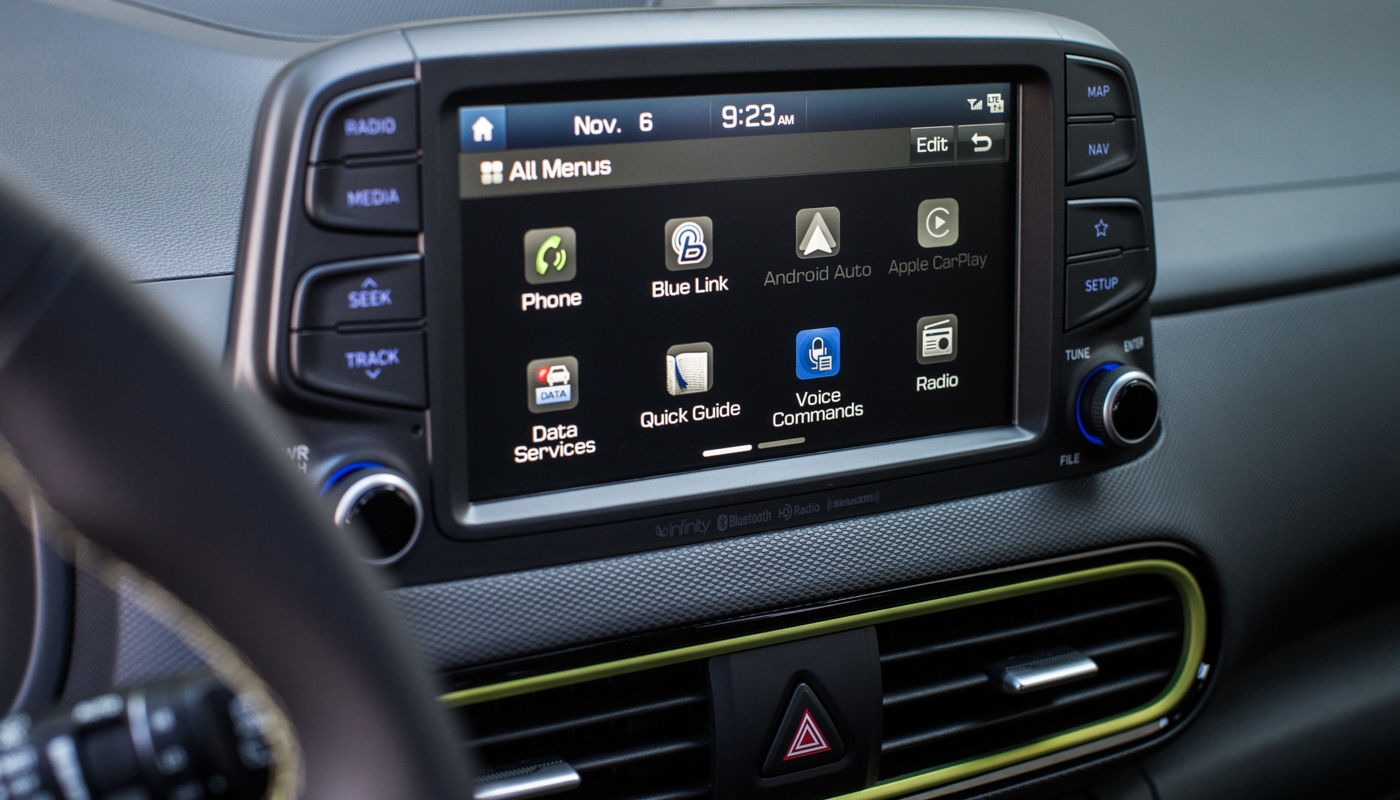
The Kona also continues Hyundai’s commitment to tech inside its cars. The infotainment system works well without the automaker overthinking the design. It’s easy to use and quick to navigate. It’s recently updated Blue Link system only adds to that utility. Press the voice button and using natural language, the system will help you find and navigate to a destination. All the processing is done in the cloud, so you do need a network connection, but in my tests, it worked as well as the voice control in CarPlay and Android Auto. Which, by the way, are both standard on all trim levels.
The Blue Link system also has a companion app, MyHyundai, that does the usual companion app stuff: lock and unlock doors, turn on the car, flash lights, honk the horn. You can also track the car on the map. Great for when you forget where you parked it, but better when you have new drivers and you need to locate them. Sorry kids, mom and dad now know you didn’t go to the library to study.
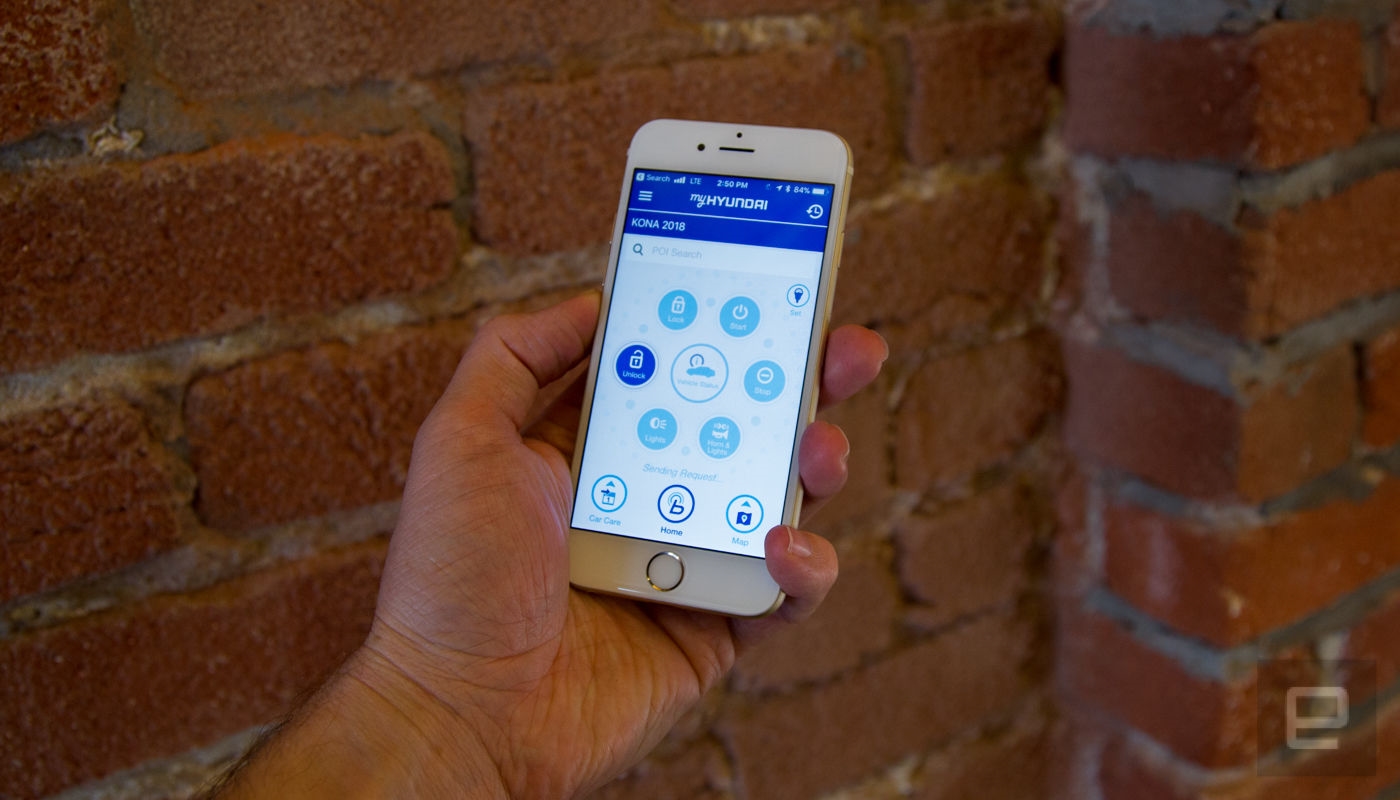
The MyHyundai app also includes monthly vehicle reports to make sure all the systems are operating normally, a diagnostic feature, and even the ability to schedule maintenance with a local dealer and see what it’ll cost. It’s a car app that you’ll actually want to launch and use on a regular basis. During my tests, it launched quickly and offered a wealth of information and access to features that I would use day to day.
Plus, Hyundai offers Alexa and Google Home support so you can turn your car on with your voice. I was unable to test this feature, but according to the automaker, Hyundais have been started 12 million times with the voice of their owners. So people seem to like it.
What I liked was how well the lane-keep assist worked on the Ultimate trim level (starting at $27,400). It handled sharpish corners on the highway better than I expected and kept the car centered in its lane most of the time. This was during a rainstorm and it only truly got confused when the lane markers were almost completely invisible thanks to a downpour. That should mean that the Kona is not only a great cruising-around car but almost perfect for heavy traffic. That’s where the missing shoe comes in.
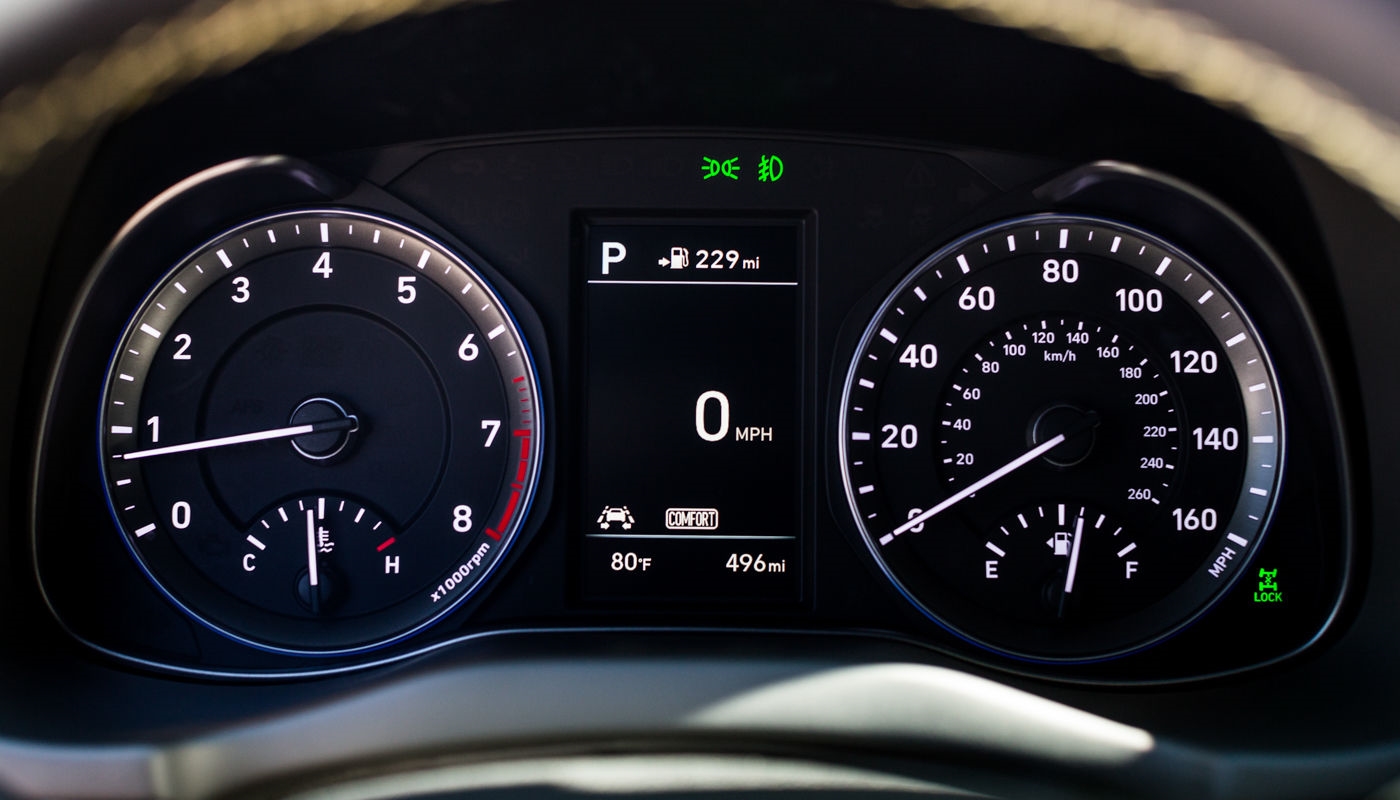
The Kona does not have adaptive cruise control. It’s confusing because the car has the hardware for the system because the Ultimate version of the car I drove had the forward collision-avoidance assist. So the hardware is there. Hyundai said that it’s heard feedback about adaptive cruise control on the vehicle and it’s seeing what it can do about that. So maybe during a refresh, the car will be able to track cars while using cruise control. Still, it’s an odd omission.
Yet, without cruise control that can track other cars, the Kona is a great small SUV. Its styling sets it apart from other cars in the segment (the Toyota CH-R is odd looking and the Honda HR-V is boring) as being exciting but not polarizing. The crossover continues Hyundai’s inclusion of technology that people actually want either as standard or without costing an arm and a leg. Plus, with the Kona EV on the horizon, the automaker has the potential to make a big splash in the electric car market if that version is as nice as the gas-powered Kona.
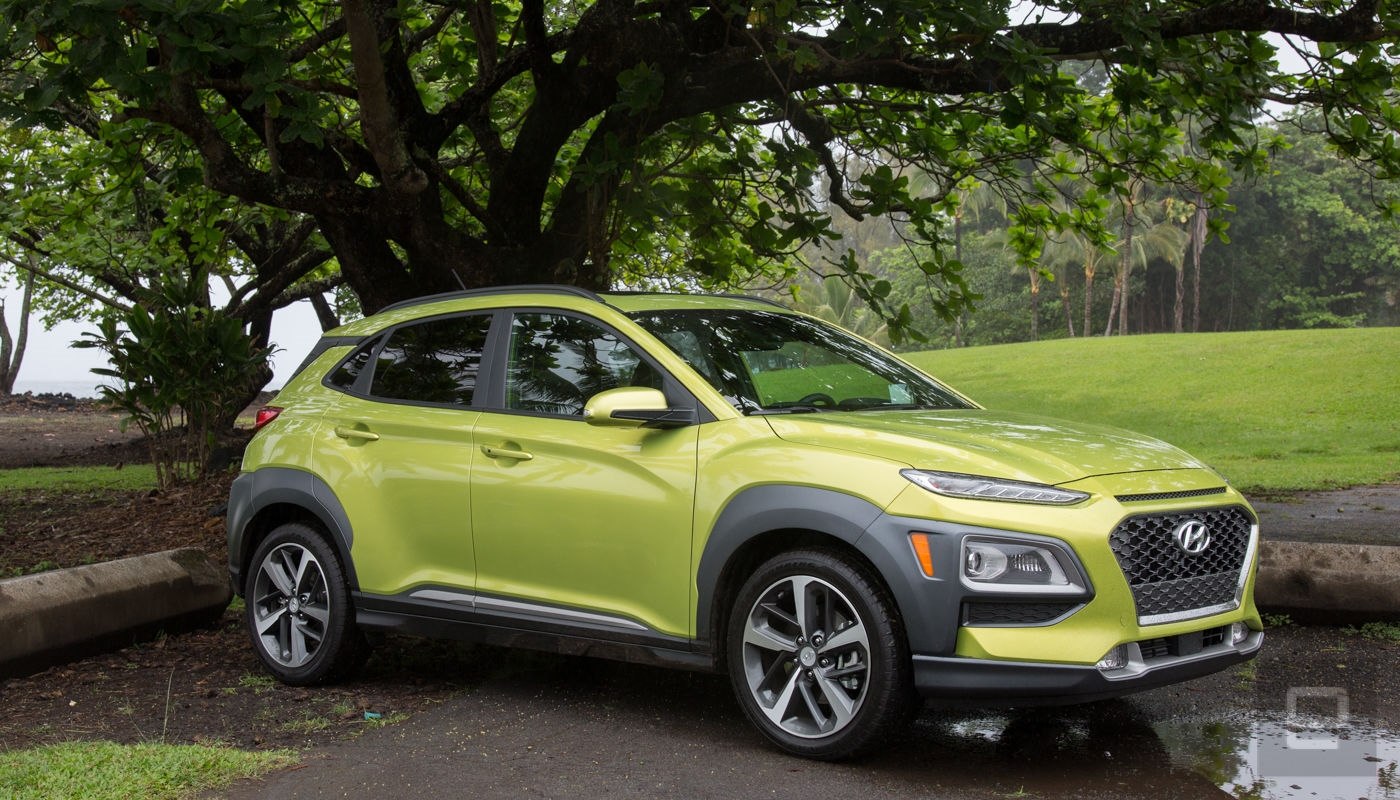
But first, it needs to add that second shoe to the ensemble.
(94)

